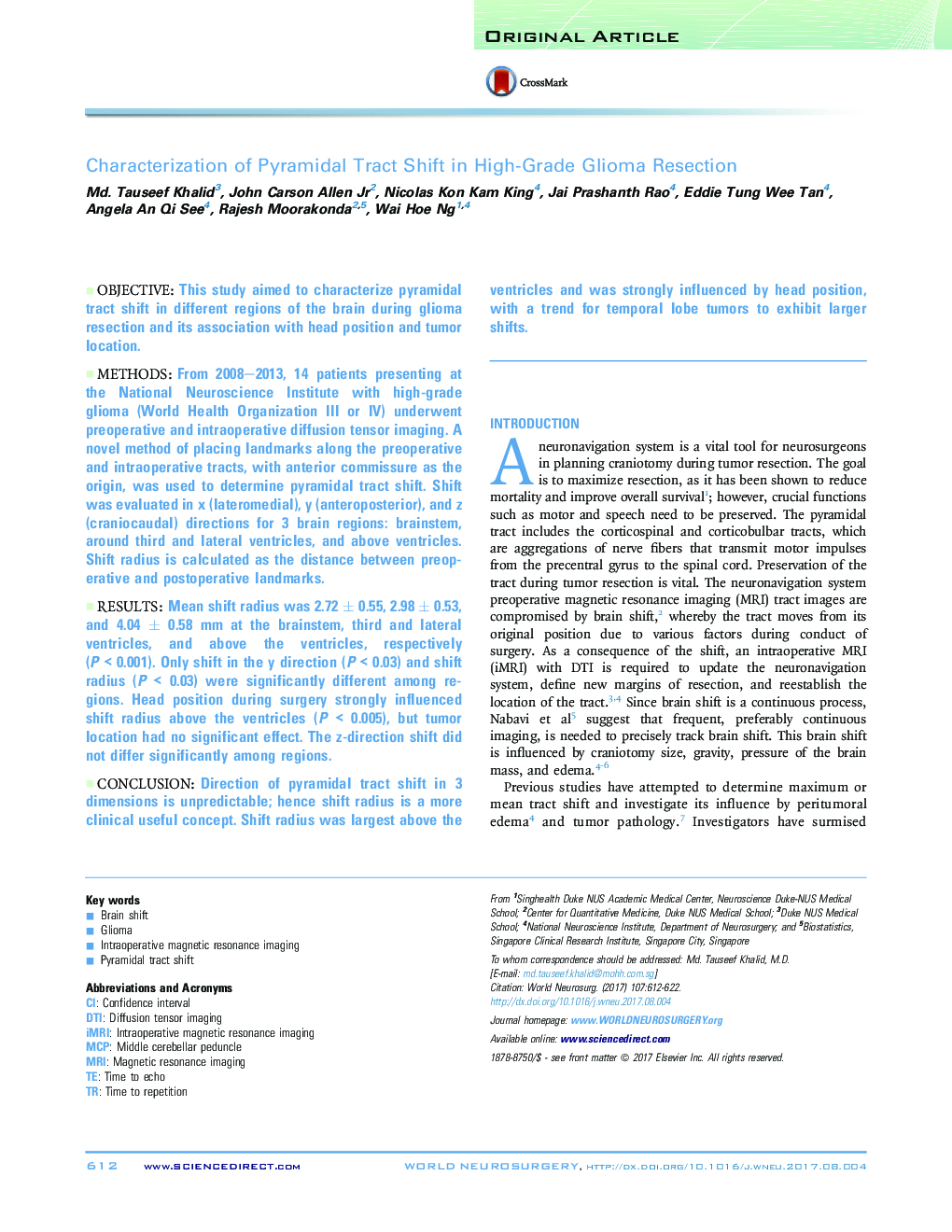| Article ID | Journal | Published Year | Pages | File Type |
|---|---|---|---|---|
| 5633926 | World Neurosurgery | 2017 | 11 Pages |
ObjectiveThis study aimed to characterize pyramidal tract shift in different regions of the brain during glioma resection and its association with head position and tumor location.MethodsFrom 2008-2013, 14 patients presenting at the National Neuroscience Institute with high-grade glioma (World Health Organization III or IV) underwent preoperative and intraoperative diffusion tensor imaging. A novel method of placing landmarks along the preoperative and intraoperative tracts, with anterior commissure as the origin, was used to determine pyramidal tract shift. Shift was evaluated in x (lateromedial), y (anteroposterior), and z (craniocaudal) directions for 3 brain regions: brainstem, around third and lateral ventricles, and above ventricles. Shift radius is calculated as the distance between preoperative and postoperative landmarks.ResultsMean shift radius was 2.72 ± 0.55, 2.98 ± 0.53, and 4.04 ± 0.58 mm at the brainstem, third and lateral ventricles, and above the ventricles, respectively (P < 0.001). Only shift in the y direction (P < 0.03) and shift radius (P < 0.03) were significantly different among regions. Head position during surgery strongly influenced shift radius above the ventricles (P < 0.005), but tumor location had no significant effect. The z-direction shift did not differ significantly among regions.ConclusionDirection of pyramidal tract shift in 3 dimensions is unpredictable; hence shift radius is a more clinical useful concept. Shift radius was largest above the ventricles and was strongly influenced by head position, with a trend for temporal lobe tumors to exhibit larger shifts.
